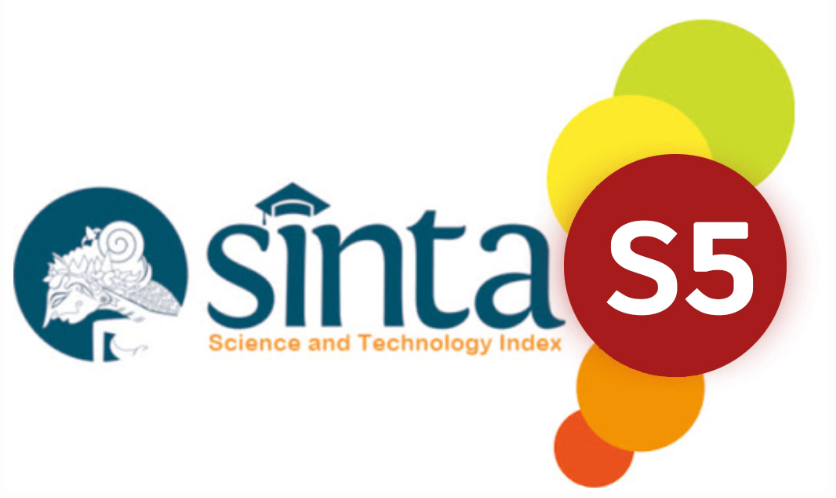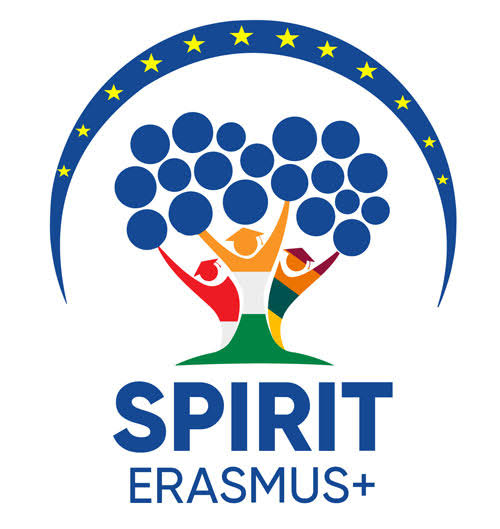Anti-Inflammatory Activity Test of Ethanolic Extract of Transdermal Patch Crinum asiaticum L Against Male Wistar Rats Induced by Carrageenan
DOI:
https://doi.org/10.32734/sumej.v8i2.17888Keywords:
anti inflammation, carrageenan, crinum asiaticum, transdermal patchAbstract
Background:Crinum asiaticum leaves are recognized for their wound healing properties, particularly in treating abrasive or inflamed wounds. Objective: This study aims to evaluate the efficacy of a transdermal patch prepared from Crinum asiaticum leaf extracts in reducing inflammation. Methods: The preparation involved applying coconut oil to the fruit, roasting it, and then using it on the affected area. Leaf samples and extracts were utilized to formulate transdermal patches at three different concentrations (1%, 3%, and 5%). The patches were assessed organoleptically for thickness, weight uniformity, folding resistance, and pH. Results: The findings demonstrated that the 5% concentration transdermal patches exhibited superior anti-inflammatory effects compared to the 1% and 3% concentrations. This suggests that higher concentrations of Crinum asiaticum extracts enhance the therapeutic potential of transdermal applications. Conclusion: The study concludes that transdermal patches formulated with Crinum asiaticum leaves are effective in reducing inflammation, with 5% concentration offering the highest efficacy. Further research is recommended to explore the clinical applications of these patches in wound management.
Downloads
References
Srebro DP, Vuckovic S, Milovanovic A, Vujovic KS, Vucetic C, Prostran M. Preventive treatment with dizocilpine attenuates oedema in a carrageenan model of inflammation: The interaction of glutamatergic and nitrergic signaling. Inflammopharmacology. 2019;27(1):121–8. Available from: https://doi.org/10.1007/s10787-018-0526-5.
Veronese N, Pizzol D, Smith L, Dominguez LJ, Barbagallo M. Effect of magnesium supplementation on inflammatory parameters: A meta-analysis of randomized controlled trials. Nutrients. 2022;14(3):679. Available from: https://doi.org/10.3390/nu14030679.
Tandoh A, Danquah CA, Benneh CK, Adongo DW, Boakye Gyasi E, Woode E. Effect of diclofenac and andrographolide combination on carrageenan-induced paw oedema and hyperalgesia in rats. Dose Response. 2022;20(2):110–8. Available from: https://doi.org/10.1177/15593258221103846.
Azeem M, et al. Design, synthesis, spectroscopic characterization, in-vitro antibacterial evaluation and in-silico analysis of polycaprolactone containing chitosan-quercetin microspheres. J Biomol Struct Dyn. 2023;41(15):7084–103. Available from: https://doi.org/10.1080/07391102.2022.2119602.
Usman Abid HM, et al. Exploring the potent combination of quercetin–boronic acid, epalrestat, and urea containing nanoethosomal keratolytic gel for the treatment of diabetic neuropathic pain: In vitro and in vivo studies. Mol Pharm. 2023;20(7):3623–31. Available from: https://doi.org/10.1021/acs.molpharmaceut.3c00236.
Abid S, et al. Unlocking the potential of phenyl boronic acid functionalized-quercetin nanoparticles: Advancing antibacterial efficacy and diabetic wound healing. Heliyon. 2024;10(1):110–9. Available from: https://doi.org/10.1016/j.heliyon.2023.e23452.
Bindu S, Mazumder S, Bandyopadhyay U. Non-steroidal anti-inflammatory drugs (NSAIDs) and organ damage: A current perspective. Biochem Pharmacol. 2020;180:1–12. Available from: https://doi.org/10.1016/j.bcp.2020.114147.
Salmerón-Manzano E, Garrido-Cardenas JA, Manzano-Agugliaro F. Worldwide research trends on medicinal plants. Int J Environ Res Public Health. 2020;17(10):337. Available from: https://doi.org/10.3390/ijerph17103376.
Wardah, Sundari S. Ethnobotany study of Dayak society medicinal plants utilization in Uut Murung District, Murung Raya Regency, Central Kalimantan. IOP Conf Ser Earth Environ Sci. 2019;298(1):012005. Available from: https://doi.org/10.1088/1755-1315/298/1/012005.
Subash A, Veeraraghavan G, Sali VK, Bhardwaj M, Vasanthi HR. Attenuation of inflammation by marine algae Turbinaria ornata in cotton pellet induced granuloma mediated by fucoidan like sulphated polysaccharide. Carbohydr Polym. 2016;151:1261–8. Available from: https://doi.org/10.1016/j.carbpol.2016.06.077.
Kongkwamcharoen C, Itharat A, Pipatrattanaseree W, Ooraikul B. Effects of various preextraction treatments of Crinum asiaticum leaf on its anti-inflammatory activity and chemical properties. Evid Based Complement Alternat Med. 2021;2(1):1–11. Available from: https://doi.org/10.1155/2021/8850744.
Mahomoodally MF, Sadeer NB, Suroowan S, Jugreet S, Lobine D, Rengasamy KRR. Ethnomedicinal, phytochemistry, toxicity and pharmacological benefits of poison bulb Crinum asiaticum L. S Afr J Bot. 2021;136:16–29. Available from: https://doi.org/10.1016/j.sajb.2020.06.004.
Park HJ, Zadeh MG, Suh JH, Choi HS. Lycorine attenuates autophagy in osteoclasts via an axis of mROS/TRPML1/TFEB to reduce LPS-induced bone loss. Oxid Med Cell Longev. 2019;2019:8982147. Available from: https://doi.org/10.1155/2021/8850744.
Makchuchit S, Rattarom R, Itharat A. The anti-allergic and anti-inflammatory effects of Benjakul extract (a Thai traditional medicine), its constituent plants and its some pure constituents using in vitro experiments. Biomed Pharmacother. 2017;89:1018–26. Available from: https://doi.org/10.1016/j.biopha.2017.02.066.
Kapoor M, Martel-Pelletier J, Lajeunesse D, Pelletier JP, Fahmi H. Role of proinflammatory cytokines in the pathophysiology of osteoarthritis. Nat Rev Rheumatol. 2011;7(1):33–42. Available from: https://doi.org/10.1038/nrrheum.2010.196.
Swandecha T, Changklang P. Formulation development and characterization of a transdermal patch containing of Crinum asiaticum leaves extract. J Appl Pharm Sci. 2023;7(1):125–9. Available from: https://doi.org/10.7324/JAPS.2023.151643.
Petitjean M, Isasi JR. Locust bean gum, a vegetable hydrocolloid with industrial and biopharmaceutical applications. Molecules. 2022;27(23):8265. Available from: https://doi.org/10.3390/molecules27238265.
Morais AMB, de Morais RMSC. Marine polysaccharides from algae with potential biomedical applications. Mar Drugs. 2015;13(5):2967–3028. Available from: https://doi.org/10.3390/md13052967.
Biswas D, Das S, Mohanto S, Mantry S. Extraction, modification, and characterization of natural polymers used in transdermal drug delivery system: an updated review. Asian J Pharm Clin Res. 2020;13(7):10–20.
Cruutisst T, Grutte. Transdermal patch as a redutor of radical activity from global burning. Eur J Pharm Sci. 2013;50(5):638–45.
Sukakpaporn T, Merikamujie S, Boonme P, Amnuaikit T, Taweepreda W, Ritthidej GC. Compound transdermal patches using polymeric natural plants as the matrix controlling system: Effect of polymer and plasticizer blends. J Membr Sci. 2012;411–412:81–90.
Harahap AM. Ethanolic extract sirih china (Peperomia pellucida) on reducing uric acids levels in wistar rats model hyperuricemia with high fructose induced. Asian J Pharm Clin Res. 2023;4(3):3123–8.
Ballesteros ML, Pérez CC, Andrade PR. Effect of glycerol and sorbitol concentrations on mechanical, optical, and barrier properties of sweet potato starch film. NFS J. 2020;20:1–9.
Downloads
Published
How to Cite
Issue
Section
License
Copyright (c) 2025 Sumatera Medical Journal

This work is licensed under a Creative Commons Attribution-ShareAlike 4.0 International License.
The Authors submitting a manuscript do so on the understanding that if accepted for publication, copyright of the article shall be assigned to Sumatera Medical Journal (SUMEJ) and Faculty of Medicine as well as TALENTA Publisher Universitas Sumatera Utara as publisher of the journal.
Copyright encompasses exclusive rights to reproduce and deliver the article in all form and media. The reproduction of any part of this journal, its storage in databases and its transmission by any form or media, will be allowed only with a written permission from Sumatera Medical Journal (SUMEJ).
The Copyright Transfer Form can be downloaded here.
The copyright form should be signed originally and sent to the Editorial Office in the form of original mail or scanned document.











